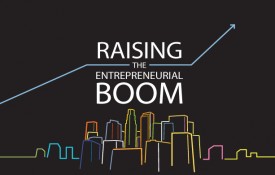Sustainable investing is booming. Between 2010 and 2014 alone, total funds in socially conscious investing strategies nearly doubled from $3.7 trillion to $6.5 trillion – and they have continued to grow ever since. Is this just a feel-good fad or are there reasons to believe that sustainable investing is here to stay?
The signs point to sustainable investing as a durable and growing core strategy for investing – it fits the times and it has been proven to work.
Today’s consumers – especially younger Millennials in their 20s and 30s – see the link between their money and their morals. They think about the larger impact of their purchasing decisions when they buy clothes, coffee, or cars. It should be no surprise that they are seeking ways to bring that approach to investing.
Yet, for a long time, the conventional wisdom held that pursuing profits meant ignoring responsibility, and that when companies considered their people and the planet they lost focus on the bottom line. The evidence shows that is wrong.
As is true for us as individuals, businesses face the daily choice of taking the high road or the low road. High Road Businesses are ones that care about the environment, their employees, and their reputation — and who put policies in place to reflect this. They are more likely to be innovative, attractive to top talent, and conscious of risks than Low Road Businesses who do not share these policies.
Between 2010 and 2014 alone, total funds in socially conscious investing strategies nearly doubled from $3.7 trillion to $6.5 trillion
Recently, a team of Harvard Business School professors looked at the performance of 180 companies over the course of 16 years. Of these, 90 were High Road companies that had actively adopted significant and relevant environmental, social, and governance policies. There were also 90 similar firms in the same sectors that had statistically identical size, capital structure, operating performance, and growth opportunities. These Low Road companies were much less likely to have embraced such approaches.
For example, the High Road companies were about twice as likely to link executive pay to environmental performance, three times as likely to keep track of the number of fatalities in the workplace, and nearly two and a half times more likely to give the Board of Directors specific responsibility around sustainability.
Their study found that $10,000 invested in a High Road company would, sixteen years later, be worth $283,600, but that same $10,000 invested in a similar Low Road company would only have grown to $146,000. And an investment in High Road companies would have had less volatile ups and downs along the way.
The challenge now is to democratize access to these sustainable investing strategies. Up to now, they have largely only been accessible to the very wealthiest investors. Today, 89% of sustainable investments are in the hands of institutional investors, money managers, and other investment institutions. Everyday investors have been on the outside looking in.
At Aspiration, we are changing this. In strategic partnership with UBS Asset Management, we have made best-in-class sustainable investing available at a $500 minimum investment. And we seek to not only offer a sustainable product, but live by those values as a company. We’re a certified B Corp that works with a Pay What Is Fair business model where we trust the customer to choose our fee. And we donate 10% of our revenue to charities helping low income Americans transform their lives.
Whether through Aspiration or other more traditional financial firms such as Morgan Stanley and Goldman Sachs, sustainable investing strategies are showing they have a customer base and a growing track record that indicates they are here to stay.















































